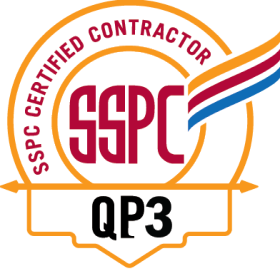When selecting or designing a tank, an important consideration is, “Which is the best tank bottom type?” The base of your tank has a significant effect on the way it operates. You should consider the function of the tank, its diameter, working position, and drainage requirements.
Read further to explore the four basic geometries of tank bottom types.
What Are the Types of Tank Bottom?
Different shapes of tanks are required for various activities including storing, mixing, recirculating, processing, dispensing, etc. The bottoms of vertical tanks are so crucial for optimal functioning that they are actually used in the tanks’ names:
#1: Conical Bottom Tanks
These have a funnel-shaped at the base, with a drainage port inserted at the lowest point of the cone. They are best for total drainage, dispensing dry materials, and decanting processes to separate liquids and solids. The slope of the cone dictates the discharge rate. Shallow slopes are used for dry and liquid materials, while steep slopes are best for thick sludges.
#2: Sloped Bottom Tanks
They have a flat, canted floor that is lower on one side. The drainage outlet is at the lowest point of the sidewall. Because the base is angled, the contents discharge completely. This type of tank bottom is a good choice for applications that require frequent draining as it’s easy to flush and clean.
#3: Dish Bottom Tanks
Their convex bottoms provide strength and rigidity for pressurized applications, thus they are used extensively in unfired pressure vessels. This shape also has the best geometry for axial flow for mixing solid suspensions and slurries. They have excellent drainage when designed to discharge from the lowest point of the dish.
#4: Flat Bottom Tanks
They are usually a cheaper option and suited to a wide variety of conditions. Their neutral geometry for solids suspension and fluid motion is good for mixing applications. However, they can’t be completely drained.
How Is a Tank Bottom Made?
T Bailey LLC fabricates tank bottoms using cold-forming or welding. A tank bottom usually starts as a simple disc or annulus, but some require specially shaped segments welded together.
Flat and sloped tank bottom types are the simplest to fabricate. A conical bottom can be rolled from a trapezoidal-shaped piece of flat plate and welded. Dish heads require specialized forming processes such as spinning and dish pressing.
The tank bottom can have a flanged edge. The flange is the lip or rim that will be welded or bolted to the sidewall of the tank. The edge can be joggled or beveled for a good fit with the tank shell.
The final stage is cutting the holes for the insertion of add-ons like drain valves, spigots, nozzles, pipe fittings, and brackets for bottom-mount mixers. Finishing processes include pickling, stress-relieving heat treatment, and polishing.
FAQs About the Tank Bottom Types
Q: Why do vertical tanks need thicker bottom heads?
A: The bottom heads need sufficient strength to support the filled dead weight of the contents. Some tanks require extra reinforcement with skirt support around the bottom head.
Q: Which type of tank bottom is easiest to drain?
A: The design of a slope bottom tank has the easiest access for frequent draining.
Q: What are the different shapes of dish bottom heads?
A: Dish head geometries include standard flanged and dished for fluid storage tanks; and 2:1 elliptical for unfired pressure vessels.
Q: What type of tank is best for bottom filling?
A: Conical bottom tanks are easy to bottom-fill. The unique funnel shape promotes faster filling with less swirling and requires lower pumping pressures.
Q: Can a conical bottom tank be used for mixing?
A: These are generally not suitable for mixing if the cone slope angle is greater than 15°. The geometry causes fluid stall, radial flow, temperature gradients, and stratification in the contents.
Q: Which type of tank bottom is the most versatile all-rounder?
A: A dish bottom head is best for moderate to high-pressure applications. It’s excellent for mixing where the impeller has to suspend settled materials effectively. It also requires less headspace and bracing than a conical bottom tank.
Premier Manufacturing of Steel Tanks & Tank Bottoms
T Bailey LLC is a premier manufacturer of aboveground steel tanks. We offer expert solutions from the initial design to delivery and installation, in the shortest possible time.
Let us assist you with the selection of the best tank bottom type to fit your application. Contact us for more information.






